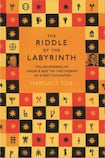
The excavated ancient ruins at Knossos have been imaginatively and gaudily furbished – Disneyfied – to attract day trippers off the cruise ships and other visitors to Crete. Even so, Knossos remains an archaeological site of great historic importance, as Margalit Fox explains in this account of how the earliest local history was revealed by an archaeologist and two dedicated cryptographers. Fox is a senior obituarist on the New York Times, with degrees in linguistics, and proves well able to present the difficult subject of her book with stylish clarity.
The legend of King Minos of Crete is scandalous. Beside his palace at Knossos he is said to have had the labyrinth built to imprison the Minotaur, half man and half bull, which he had reason to resent, as the hybrid was the offspring of the affair that his wife, Pasiphaë, had with a bull. It is hard to imagine a more humiliating case of cuckoldry.
Archaeological exploration was a rich man’s hobby late in the 19th century. Heinrich Schliemann, a German businessman and ardent classicist, found remnants of the ancient city of Mycenae dating from the Aegean Bronze Age (about 1600 to l200 BC), and signs of well-administered prosperity, but no vestige of writing. “Though Schliemann excavated on a typically grand scale . . . he turned up no clay tablets, no inscriptions cut in stone – no evidence whatsoever that this sophisticated mainland society had been literate.” The anomalous lack of written records inspired an English archaeologist to search farther.
Arthur Evans, later knighted for services to archaeology, conditioned by his father’s interest in prehistory, did not accept the prevailing dismissal of “Homer’s accounts of Bronze Age life as pure poetic fantasy”, Fox writes. “The glories of Classical Greece, the strong implications went, had sprung full blown from the long cultural vacuum that preceded them.” To Arthur “the idea that Classical Greece had arisen out of nowhere was absurd”.
In an antiquities shop in Athens, Arthur Evans bought several ancient seal stones, engraved to signify ownership with impressions in clay or wax. He was told they came from Crete. He learned that Cretan peasant women wore similar stones as amulets. “Evans identified two types of Cretan writing. On some stones the carvings were clearly hieroglyphic, teeming with pictographs of people, plants and animals. On others the symbols were ‘linear and quasi-alphabetic,’ as if the hieroglyphs had been reduced to their clean, bare outlines in ‘a kind of linear shorthand’.”
What was needed, Evans knew, was a full-scale excavation of Cretan soil. In 1900 he moved to the town that Homer described as “broad Knossos”, the home of King Minos, “whom Zeus received every ninth year in private council”. As the digging became extensive Evans built a second home there, Villa Ariadne, named after King Minos’s daughter, who helped her lover, Theseus, make his getaway from the labyrinth after killing the Minotaur.
Evans excavated more than 2,000 clay tablets bearing the cryptic inscriptions that he classified as the rudimentary Linear A and the more refined Linear B. The tablets had endured only because they had been baked hard by the fire that destroyed King Minos’s palace. Evans published reproductions of fewer than 200 of the tablets, much to the chagrin of cryptographers who believed that more were required for analysis and possible decipherment. However, Evans refused all requests to release additional tablets. As president of the Hellenic Society, the Society of Antiquaries of London, the Royal Numismatic Society and the British Association for the Advancement of Science, he was an Establishment dog in the manger with unassailable archaeological authority. If he couldn’t decipher Linear B, it seemed, he was reluctant to help anybody else to do so. The trouble was that Linear B was an almost inscrutable code. As Fox points out, “An unknown script to write an unknown language is a locked-room mystery.”
50 years to solve
The mystery took 50 years to solve. Fox's most admirable achievement is to show, in painstaking graphic detail, how two extraordinarily ingenious, skilful and determined cryptographers finally succeeded. Fox's heroine is the first of them, a truly heroic linguistic detective, who devoted her life to working out what language the Minoans wrote and what they said in it. Alice Kober, an assistant professor of classics at Brooklyn College, "taught a cumbersome load of classes" by day, Fox writes. By night "she chipped away, methodically and insistently, at the script of Minoan Crete". Her "vital contribution to the decipherment has been largely overlooked", partly because of her "quiet, deliberate way of working . . . never committing her ideas to print until they met her exacting standards of proof" and partly because of her death, at the age of 43, in 1950, just before she could have completed her task.
With access to Kober’s many letters and other papers at the University of Texas, Fox has been able to portray this unglamorous, reticent academic in all her warm humanity and to give credit to the substantial foundation of scholarly work she left to posterity.
In 1952, about 18 months after Kober’s death, Michael Ventris, a brilliant 30-year-old English architect and phenomenal linguist, solved the riddle of the script, “a solution arrived at”, according to Margalit Fox, “through a combination of genius, perseverance and remarkably inspired guesswork”.
The Minoan language proved to be an early form of Greek, not Etruscan or Phoenician, and the tablets, far from Homeric, were simply records of King Minos’s domestic accounts.










